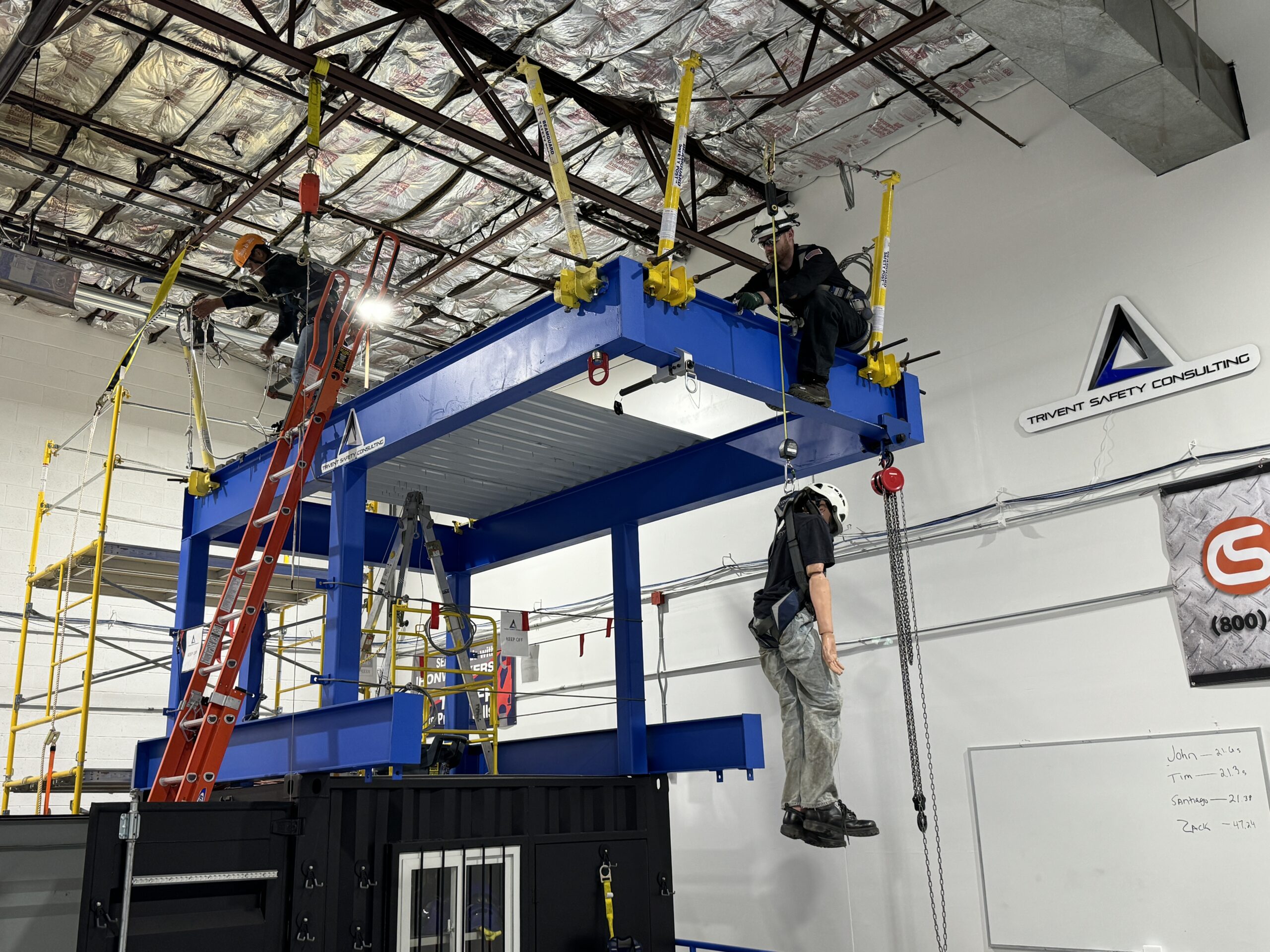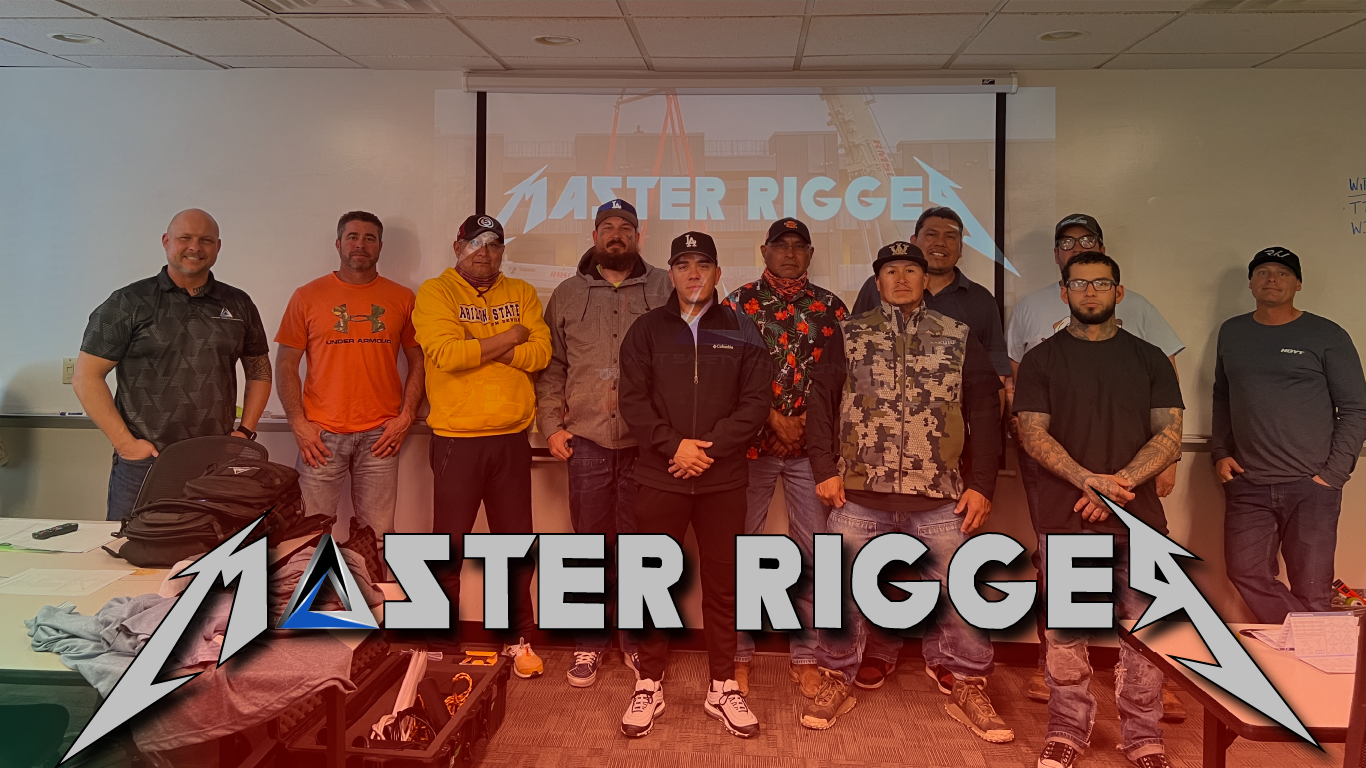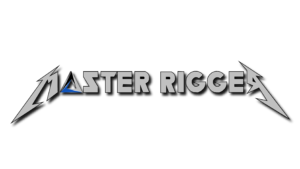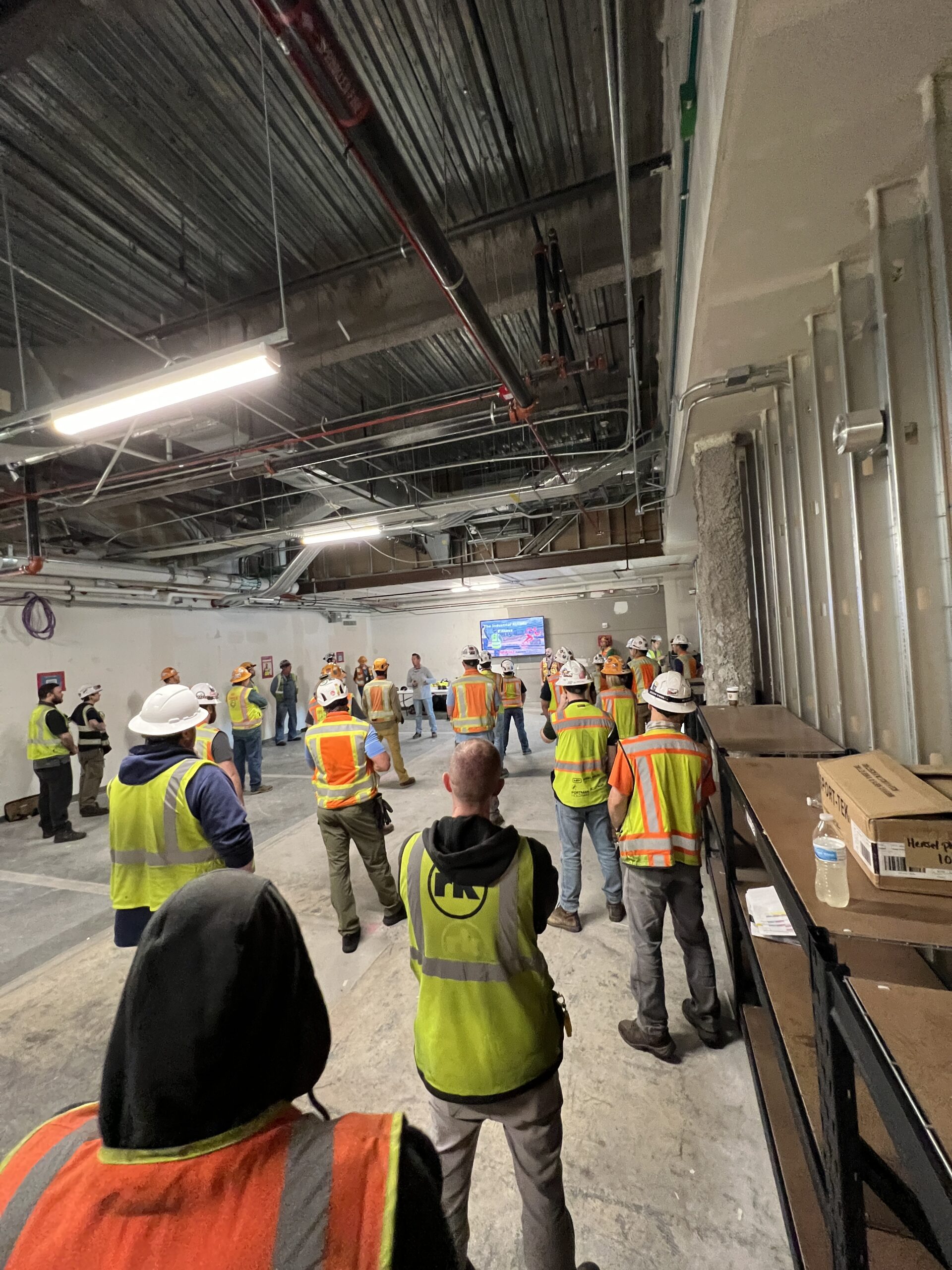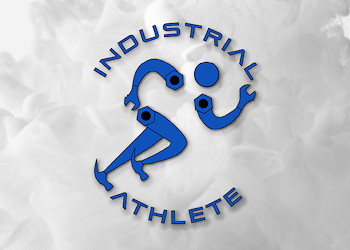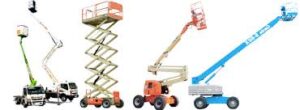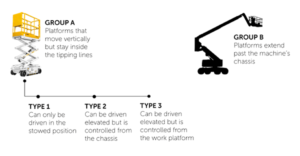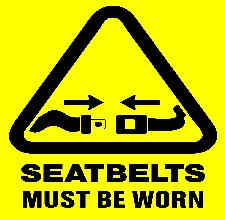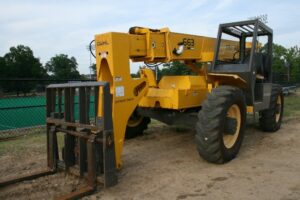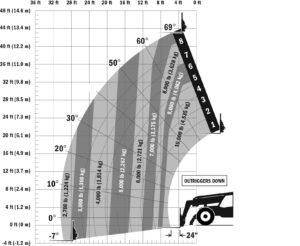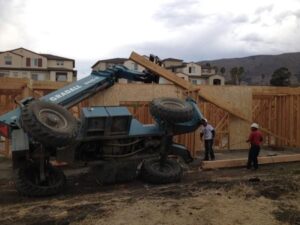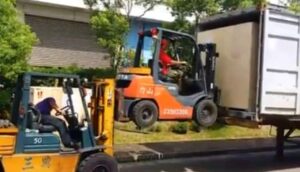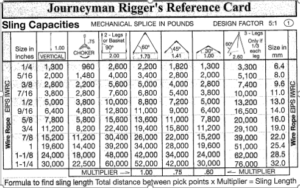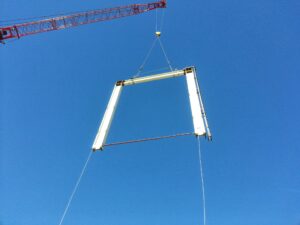“we firmly believe in the power of hands-on training. Our fall protection courses feature practical exercises and simulations that allow participants to apply their theoretical knowledge in real-life scenarios.”
Continue readingTaking Your Rigging Skills to the Next Level: The Trivent Master Rigger Course
Are you ready to elevate your rigging capabilities and become a master of the trade? Look no further, because we have just the course for you!
Introducing the Trivent Master Rigger Course – an exhilarating opportunity that will take your rigging skills to unprecedented heights. Whether you’re a seasoned professional or just starting out in the industry, this comprehensive training program is designed to push boundaries, expand knowledge, and transform even the most proficient rigger into an unstoppable force. Get ready to embark on a thrilling journey as we dive deep into advanced techniques, cutting-edge equipment, and unparalleled expertise. Buckle up and get ready – it’s time to level up your rigging game!
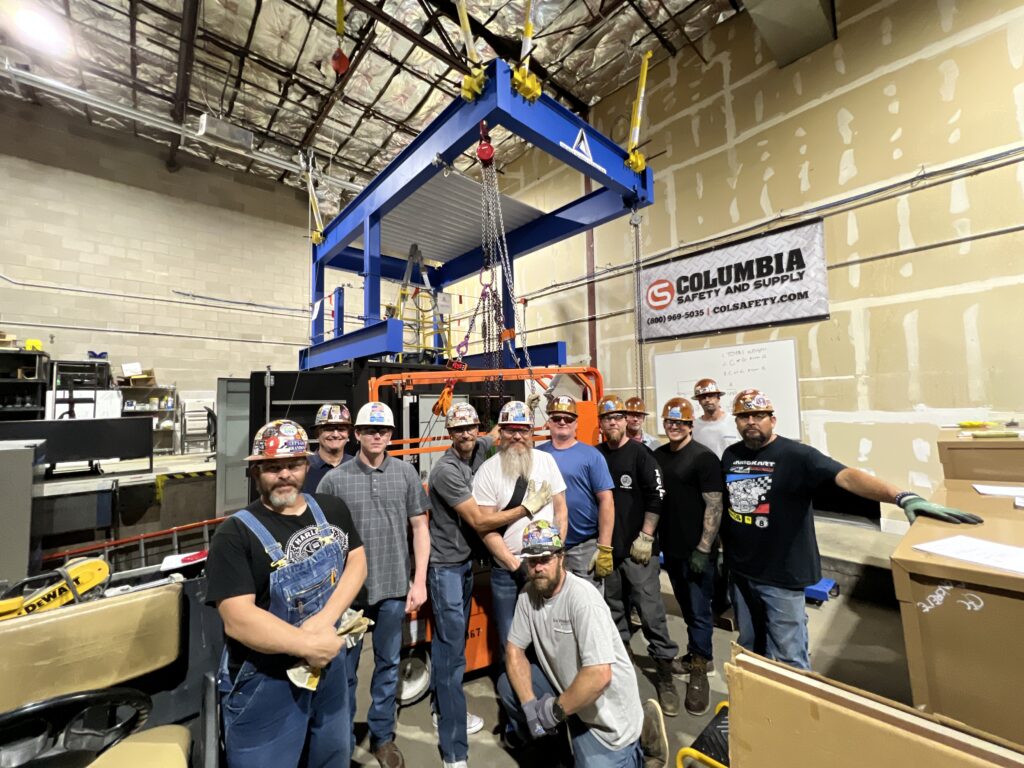
Introduction to the Trivent Master Rigger Course
The Trivent Master Rigger Course is an intensive, hands-on training program that covers all aspects of professional rigging. The course is designed for riggers who want to take their skills to the next level and become certified master riggers. The course includes classroom instruction and practical training on a variety of topics, including calculating sling tension, Load Weight Estimation, coefficients of friction and determining the center of gravity for asymmetrical loads. Students will also learn about the latest rigging equipment and how to use it properly. Upon completion of the course, students will be able to safely and efficiently rig for a variety of applications. Whether you’re looking to start your own rigging business or simply want to improve your rigging skills for your current job, the Trivent Master Rigger Course is the perfect choice.
What is Rigging?
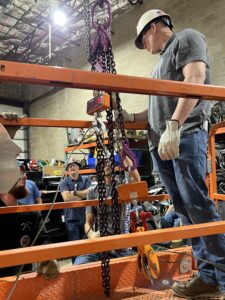 Rigging is the process of planning, selecting, and using complex slinging techniques to move material using cranes or hoists. It is a highly skilled trade that requires training and certification. Riggers are responsible for the safety of the workers and equipment they are using, as well as the load they are lifting. Rigging involves attaching loads to cranes or other lifting devices using various types of hardware, such as chains, ropes, pulleys, and blocks. A rigger must be able to calculate the weight of the load and the size and capacity of the crane or other lifting device being used. They must also know how to secure the load so that it does not displace while it is being lifted. Riggers must also be familiar with OSHA regulations and standards pertaining to rigging operations. They must be able to properly inspect all rigging equipment before each use and keep accurate records of all inspections.
Rigging is the process of planning, selecting, and using complex slinging techniques to move material using cranes or hoists. It is a highly skilled trade that requires training and certification. Riggers are responsible for the safety of the workers and equipment they are using, as well as the load they are lifting. Rigging involves attaching loads to cranes or other lifting devices using various types of hardware, such as chains, ropes, pulleys, and blocks. A rigger must be able to calculate the weight of the load and the size and capacity of the crane or other lifting device being used. They must also know how to secure the load so that it does not displace while it is being lifted. Riggers must also be familiar with OSHA regulations and standards pertaining to rigging operations. They must be able to properly inspect all rigging equipment before each use and keep accurate records of all inspections.
Benefits of Taking the Trivent Master Rigger Course
The Trivent Master Rigger Course is designed to take your rigging skills to the next level. This course will provide you with the knowledge and skills necessary to become a master rigger. You will learn how to safely and effectively rig loads for lifting, lowering, and moving them into position. In addition, you will learn how to inspect and maintain rigging equipment.
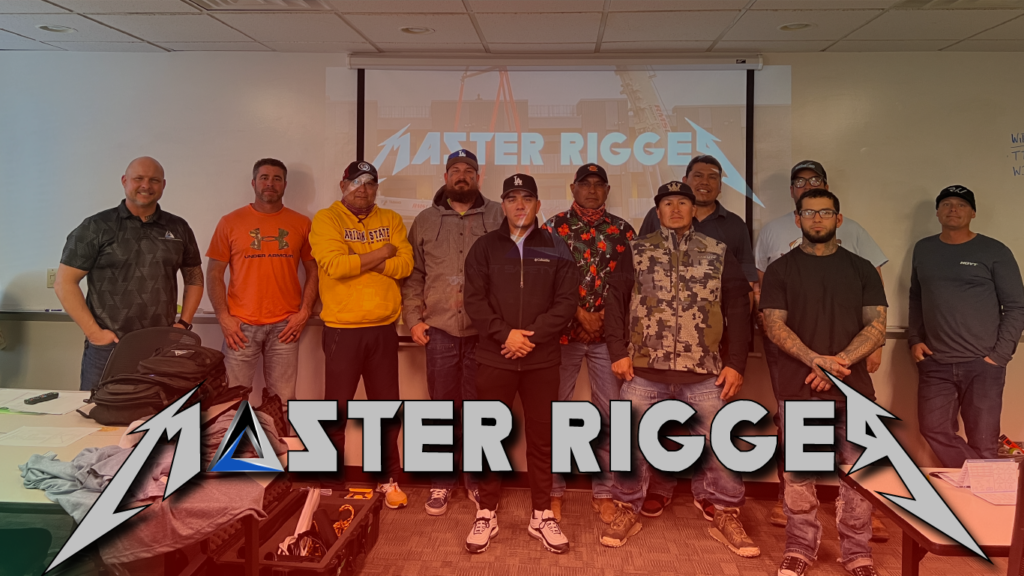
Upon completion of the Trivent Master Rigger Course, you will be able to:
- Safely and effectively rig loads for lifting, lowering, and moving them into position
- Inspect and maintain rigging equipment
- Understand the principles of load analysis and mechanical advantage
- Select appropriate rigging methods and techniques for specific tasks
- Calculate sling tensions and center of gravity locations
- Plan lift sequences
Topics Covered in the Course
This course covers a variety of topics that are essential for riggers who want to take their skills to the next level.
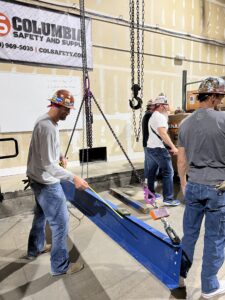 These topics include:
These topics include:
- Sling Types
- Sling Capacities
- Sling Inspections
- Hardware inspections
- Hardware Capacities
- Hitch Types
- Load Control
- Power Line Safety
- Crane / Hoist Dynamics
- Calculating Sling tensions
- Load Weight Estimation
- Block & Fairlead Loading Calculations
- Coefficients of Friction Calculations
- Load Factors & Weight Distribution Calculations
- Practical (Hands On) Applications for:
- Sling Tension Calculations
- Load Weight Estimation
By the end of the course, students will have a thorough understanding of these topics and will be able to apply them in real-world situations.
Prerequisites for Taking the Course
In order to take the Trivent Master Rigger Course, you must first take the Trivent Qualified Rigger & Signalperson training course.
Facilities and Instructors at Trivent
The Trivent Master Rigger Course is held at the Trivent training center in Wheatridge, Colorado. The course is taught by experienced riggers who have a wealth of knowledge and experience in the industry. Attendees will get a unique hands-on experience using the indoor Trivent training tower to test principals learned in the classroom in a controlled hands-on learning environment. The facility is equipped with all the necessary rigging equipment and supplies, and the instructors are knowledgeable and experienced in all aspects of rigging. The course is designed to give students a comprehensive understanding of rigging, from the basics to advanced techniques. Students will learn how to safely and effectively rig various types of equipment, including trusses, motors, pulleys, and winches. They will also learn about different types of rigging hardware and how to select the right type of hardware for each application.
Tips for Making the Most of the Course
If you’re looking to take your rigging skills to the next level, the Trivent Master Rigger Course is the perfect way to do it. Here are some tips for making the most of the course:
- Pay attention to the lectures and demonstrations.
This is a hands-on course, but there will also be plenty of opportunities to learn from the instructors. Make sure you take advantage of those moments. - Practice, practice, practice.
The more you can get your hands on the equipment and put what you’re learning into action, the better. - Ask questions.
No matter how much experience you have, there’s always more to learn. Don’t be afraid to raise your hand and ask questions when you’re unsure about something. - Get feedback from the instructors.
Throughout the course, you’ll have plenty of chances to get feedback from the instructors on your progress. Use that feedback to help improve your skills. - Stay focused and dedicated.
This is a challenging course, but if you stay focused and dedicated, you’ll come out of it a better rigger than when you started.
Conclusion
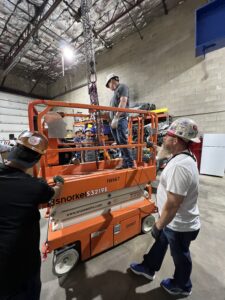 Learning to rig is an important step in taking your career to the next level. The Trivent Master Rigger Course offers a comprehensive and engaging training program for beginners and experienced riggers alike, providing the knowledge needed to stay safe while expanding rigging skills. With this course, you will be well-equipped with the tools necessary to make heavy things resist gravity!
Learning to rig is an important step in taking your career to the next level. The Trivent Master Rigger Course offers a comprehensive and engaging training program for beginners and experienced riggers alike, providing the knowledge needed to stay safe while expanding rigging skills. With this course, you will be well-equipped with the tools necessary to make heavy things resist gravity!
Blog Author: Bryan McClure
Unleashing the Inner Athlete: How the Industrial Athlete Program Can Transform Tradespersons’ Performance
Are you ready to tap into your untapped potential and unlock the powerhouse within? We’re about to embark on a journey that will revolutionize the way tradespersons approach their craft. Introducing the Industrial Athlete Program – an extraordinary initiative designed to transform your performance, elevate your skills, and unleash the inner athlete in you. Get ready to take charge of your physical and mental well-being like never before as we dive deep into this groundbreaking program that is set to redefine what it means to be a tradesperson. Whether you’re swinging hammers or operating heavy machinery, this blog post is packed with insights and strategies that will not only enhance your productivity but also empower you to achieve greatness in every aspect of your life. It’s time for a game-changing transformation – let’s unlock the inner athlete together!
The Four Pillars of the Industrial Athlete Program
1. Nutrition
2. Exercise & Stretching (Training)
3. Ergonomics
4. Behavioral Safety (Mindset)
The Industrial Athlete Program is based on the four pillars of training, recovery, nutrition, and mindset. Each pillar is essential to the success of the program and the overall health and performance of the tradesperson.
1. Nutrition: The first pillar of the Industrial Athlete Program is nutrition. This pillar focuses on providing the body with the nutrients it needs to perform at its best. The nutrition component of the program includes Meal Planning Guides that provide tradespeople with information on how to fuel their bodies for optimal performance.
2. Exercise & Stretching: The second pillar of the Industrial Athlete Program is Exercise & Stretching or training. This pillar focuses on developing the physical strength, power, and endurance needed to perform at a high level day in and day out. The training component of the program includes learning to stretch using dynamic and static stretching techniques as well as resistance band exercises to promote strength in the three major areas of concern for tradespersons, shoulders, knees & back.
3. Ergonomics: The third pillar of the Industrial Athlete Program is ergonomics. The ergonomics module educates the tradesman on hot to fit the work to the worker. This module is a continuation of the exercise module in the efforts to educate the workforce on methods to reduce Musculoskeletal disorders (MSD’s). The new technology segment introduces the attendees on equipment designed to assist reduce MSD’s.
4. Behavioral Safety: The fourth pillar of the Industrial Athlete Program is Behavioral Safety or mindset. This pillar focuses on helping tradespeople develop a positive mindset that will allow them to perform at their best mentally and emotionally. The Behavioral Safety module educates the tradesman on brain health. Construction is the number two occupation in the United States for suicide. This module educates the attendees on various coping and support strategies for themselves or coworkers that are going through tough times. The module also covers the differences in employees risk perception and how to view the world through the lens of risk assessment.
The four pillars of the Industrial Athlete Program provide a comprehensive approach to ensure workplace safety and health for workers in all industries. By focusing on these core areas employers can create a positive work environment that encourages productivity and reduces accidents. With proper planning and implementation, the program can help improve worker wellness while providing an effective tool to reduce costs associated with workplace injuries.
- Learn more by visiting our Industrial Athlete Training Course page.
Blog post Author: Bryan McClure
5 Reasons You Need Mock OSHA Inspections and Audits
The anxiety of walking around with an OSHA inspector when you don’t know if there are holes in your safety measures is something you should never have to deal with as a safety manager or business owner.
Continue readingANSI A92 How Will The New Standard Affect Training?
As we progress through 2020 and are neck deep in construction challenges such as job site safety, schedules, deliveries, man power etc., it is easy to overlook the fact that there will major upcoming changes before the end of this year in regards to the operating and safe use of Mobile Elevated Work Platforms “MEWPS”. ANSI is moving towards a new access equipment design standard, A92.20, which will broadly bring North American equipment into line with equipment currently in the EU marketplace, closing off most global variances. Standards for safe use (A92.22) and training (A92.24) go further in completing this objective. Under these new standards, the Aerial Work Platforms (AWPs) terminology becomes Mobile Elevating Work Platforms (MEWPs).
As mentioned above, the new ANSI A92 can be broken down to three sub-parts:
Changes in design A92.20:
Equipment classification can be broken down as follows:
A Group A machine has a design that does not allow the main platform to extend beyond the tipping line. In other words, the platform does not go outside of the drive chassis envelope. A perfect example of a Group A would be a scissor lift.
Conversely, a Group B machine has a design that allows the platform to extend beyond the tipping line. A great example of a Group B machine would be an articulating or telescopic boom.
A MEWP Type is in reference to the equipment’s ability to travel:
- Type 1 – Traveling is allowed only with the MEWP in its stowed position
- Type 2 – Traveling with the work platform in the elevated position is controlled from a point on the chassis
- Type 3 – Traveling with the work platform in the elevated travel position is controlled from a point on the work platform
Moving forward training shall rely heavily on A92.22 (safe use) and A92.24 (training)
A92.22 (safe use):
- Safe-use planning requires a plan specific to MEWPs to be developed by users to include tasks such as: a risk assessment,
- the selection of the proper MEWP for application, and
- access, preparation and maintenance of the work site prior to using the MEWP.
- Supervisors are being held accountable for safe operations and developing risk assessments.
- Included in a risk assessment is the user requirement to develop a rescue plan for workers who may require rescue from a platform in an elevated position.
A92.24 (training):
- Training is required for each class of MEWP classification.
- Training must be provided in a manner that trainees can understand.
- Designation of a qualified person to monitor, supervise and evaluate operators on a regular basis to ensure proficiency.
- Supervisors of MEWP operators shall receive supervisor training. This shall include:
- Proper MEWP selection,
- User and operator requirements,
- How to identify known hazards and the means to manage risk.
- How to follow the requirements of the operator’s manual.
Want more information? Give Trivent Safety Consulting a call today at 1-800-819-6092 and get connected to one of our industry leading trainers for more information and details on the standard!
BUSINESS OWNER & MANAGER CHARGED WITH MANSLAUGHTER
Earlier this year, in San Francisco there were two people charged with involuntary manslaughter in the death of an employee that was crushed while operating a forklift that he had not been formally trained or certified to operate. All powered industrial truck operators must be trained and certified in accordance with OSHA 1926.602 (d). Alfred Lee, owner of Good View Roofing and Building Supply Corp., and manager Alan Chan were charged with manslaughter in the death of employee Hua Quing Ruan. The accident occurred two years earlier in 2016 when the 60-year-old worker tipped over the forklift while attempting to load a bag of mortar mix while traveling down a loading dock ramp with a wooden pallet into a customer’s car. In transit the bag fell off the pallet and blocked the front wheel of the forklift. The worker then attempted to back away from the fallen mortar bag and backed off the side of the ramp and tipped the lift over. Surveillance video shows the employee trying to jump out of the way of the falling lift, however he was not able to get clear and was hit and crushed by the lift.
According to the Cal/OSHA investigators the employee was not wearing his seat belt and it played a significant factor in his death. In addition, the employee had no formal forklift training and was not certified to operate the lift. “When employers take workplace safety shortcuts, it’s employees that suffer,” District Attorney George Gascón said in a statement.
OSHA says, 70 percent of workplace accidents can be avoided with proper training and safety procedures. NIOSH states that the three most common types of injuries occur when: A forklift overturns; workers are struck, crushed, or pinned by a forklift; and workers fall from a forklift.
Tips on how to avoid accidents and near misses when operating a forklift:
- • Give your forklift a thorough inspection prior to use
• Only operate a forklift if you are authorized to do so
• Always use your seatbelt
• Become familiar with the features and functions of each forklift you operate - • Only pick up a load when you are sure it is stable
• Know and do not exceed the rated load capacity of your forklift
• Understand and know how to use your load capacity chart
NOT KNOWING THIS …
CAN LEAD TO THIS!
Requirements for Retraining and
Refresher training is required when:
• There has been an unsafe operation
• An accident or near miss
• An evaluation indicates that the operator is not capable of performing the assigned duties
• A new type of truck has been introduced into the workplace
• There has been three years since operators last evaluation
It is unfortunate events like this one that illustration the importance of getting your people the training they need to do the job as informed, safe workers. It has been said that the OSHA standards have been written in the blood of those that have come before us, before a standard was developed. Always be sure that workers who use heavy equipment have the experience and training needed to operate their machine safely. Lets protect our workers and the neighboring trades onsite from needless incidents and accidents that are preventable by receiving proper training!
NEED YOUR PEOPLE CERTIFIED?
Are Your Riggers Qualified?
Quick question for you, do you know what the total sling capacity of two ½” EIPS / IWRC wire rope slings choked at 45 degrees is good for? More importantly does the person you have rigging for you know the answer? The answer may surprise or potentially scare you. If the answer is no, then this is where you want to contact Trivent Safety Consulting and get signed up for the next qualified rigger and signal person training course. Subpart CC requires qualified rigger & signal persons while rigging and signaling construction loads. Our trainers at Trivent Safety Consulting have over 20 years of field experience when it comes to rigging and signaling cranes. We have developed a training course that can get your workers up to speed on how to properly rig materials and flag / signal a crane properly!
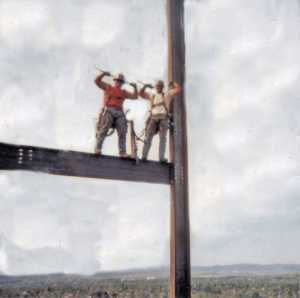
Here is how you determine the answer to the original question:
½” EIPS IWRC wire rope sling in a choked configuration has a rated capacity of 3800lbs. At 45 degrees we have a listed sling multiplier of 1.41
3800 X 1.41 = 5358 combined rated lifting capacity.
Would you like to learn more? Follow our link to our next upcoming qualified rigger and signal person class!
Contact us today 1 800-819-6092 or reach us on the web at www.triventsc.com
Understanding OSHA and OSHA Standards
How many of you out there have been on a project or in a facility and the word spread that OSHA was there? For most employers when this happens, the reactions tend to be the same, and what they do is consistent, shut down and stop working. My question to you is, why? I’m not an advocate for stopping work unless you absolutely must. OSHA has a job to do and so do you. Why shut down if you’re not doing anything wrong? The reason is fear, fear of the unknown when OSHA shows up. Why are they here? Am I doing something wrong? Are there any violations? Our pulse begins to race, we may start sweating, our blood pressure rises. All are physiological responses to stress and fear.
Now instead of shutting down our projects because of the unknown, wouldn’t it be better if we’re aware and know the realities of our projects? Do you know the standards that govern your projects? The whole reason OSHA is around is for the development and enforcement of the construction and general industry standards. Standards that were created to help ensure employees go home safe each day.
I’m sure everyone has heard of them, maybe some of you have even read them. Though, most people go their entire career without knowing the rules we’re supposed to follow. As a safety professional, it’s been my responsibility to understand the rules that applied to the people I work with. To help my teams work within these rules and still be productive. These rules are the 1926 Construction and the 1910 General Industry standards. I’m not going to tell you that I’ve read them all, I’m also not going to tell you that I agree with everything that is in the standards. Some of the standards are old and antiquated. Others are written in such a manner that it’s very difficult to understand or to follow. Unfortunately, though, these are the laws we’re given, and we need to learn how to work safely while following them.
To help alleviate our fear and run a safe project, a better understanding of these standards and regulations should be a priority for all employers. You need to understand what rules you are required to follow and what affects your employees. Once you understand what affects your employees, I strongly recommend that you spend the time to educate them on the rules and standards as well.
Fear is a very powerful emotion and can lead us all to make bad choices. The more education and training we can give our employees will lower the fear, which hopefully, will lead to better decisions on our projects and in turn lead to a safer employee and project.
We do not need to fear OSHA showing up on our projects or at our place of business. We need to understand the rules and mitigate the hazards. This understanding comes from training, training and more training.
If you would like to know what OSHA is looking for on your projects, call us at 1(800) 819-6092. We can come to your site to perform a mock OSHA inspection. The first inspection is always free!
Construction Managers Face Criminal Charges in Crane Accident
Inexperience and lack training rears its ugly head yet again. An accident which occurred last June at a condominium project in East Harlem left two ironworkers injured when a crane fell several stories to street level. The investigation concluded that the workers involved in operating the crane had no formal training or qualifications to be working with the equipment on the project. The crane toppled over after being loaded with a glass panel that was estimated to have weighed 1800lbs, while the cranes configuration was only rated to have a lifting capacity of 880lbs. To read full article follow the link: https://www.wsj.com/articles/two-construction-managers-face-criminal-charges-in-east-harlem-crane-accident-1541723812
NEW: OSHA Proposes Rule to Ensure Crane Operators Are Qualified To Safely Operate Equipment. OSHA Trade Release (May 18, 2018). Crane Operator Certification Extension – Final Rule. OSHA delayed the enforcement date for crane operator certification by one year until November 10, 2018.
Some topics for consideration when working with mini crawler cranes:
• How much does the material weigh?
• Load chart interpretation
• Capacity of crane at the working radius.
• How and what kind of rigging is needed?
• Rigging clearly tagged and in good working condition?
• Are ground conditions adequate for crane set up?
• Outriggers fully extended?

